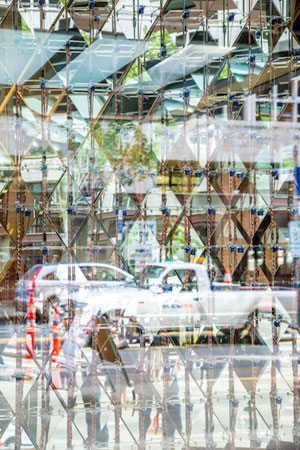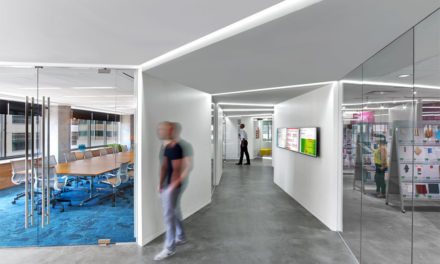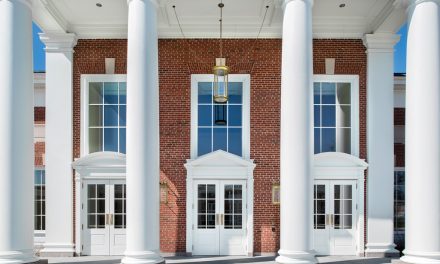SEATTLE — LMN Architects, a multidisciplinary design firm with a reputation for community-focused and impactful civic projects of all scales, announce the creation of ION2, LMN Tech Studio’s latest experimental installation exploring responsive and adaptive systems.
 “We have been exploring a range of network and interaction systems in the form of large prototypes as a way to understand the potential for intelligent responsive systems as part of buildings,” says Plamena Milusheva of LMN Tech Studio. “ION2 allows us to think through the possibilities of what it might mean to develop responsive building systems, such as facades, mechanical, or structural systems. Building a prototype at this scale challenges us to work through a number of potential constraints as well as engage with some of the latest technology.”
“We have been exploring a range of network and interaction systems in the form of large prototypes as a way to understand the potential for intelligent responsive systems as part of buildings,” says Plamena Milusheva of LMN Tech Studio. “ION2 allows us to think through the possibilities of what it might mean to develop responsive building systems, such as facades, mechanical, or structural systems. Building a prototype at this scale challenges us to work through a number of potential constraints as well as engage with some of the latest technology.”
The five-foot-wide-by-seven-foot-tall prototype is made of 98 see-through, mirrored acrylic panels. Each 7.5-inch by 12-inch panel is attached to a framework with a custom-designed and -fabricated bracket. Each panel is rotated by an individually controlled micro-servo motor programmed to rotate through 140 degrees of rotation. The panels rotate in response to external input as well as through pre-programmed patterns.
“The installations we build are like sketches, allowing us to physically manifest an idea and begin to see where our attention should be focused. Tech Studio plays a similar role for the office, exploring other directions of what could be next for building systems as well as the tools within our design process,” says Scott Crawford, LMN Tech Studio founding member.
 The two inputs to the system are from a Microsoft Kinect and a panel of 98 buttons mapped to the panels. The Kinect is set to respond to input from activity outside the storefront window where the prototype is installed. Movement from passersby is captured by the Kinect (the Kinect registers and tracks the skeletal frame of up to two people within its field of vision). The points that define the skeletal frame serve as point inputs for a Grasshopper definition that uses a number of components including some from the plug-in Firefly to create and send angle data to the servos through the microprocessors. The mirrored acrylic panels then rotate to reflect the data. Alternatively, the button panel enables an operator to engage a series of pre-programmed actions through the same Grasshopper definition where it triggers a range of localized patterns of rotation. There is even a secret button sequence that unlocks a special behavior of the system.
The two inputs to the system are from a Microsoft Kinect and a panel of 98 buttons mapped to the panels. The Kinect is set to respond to input from activity outside the storefront window where the prototype is installed. Movement from passersby is captured by the Kinect (the Kinect registers and tracks the skeletal frame of up to two people within its field of vision). The points that define the skeletal frame serve as point inputs for a Grasshopper definition that uses a number of components including some from the plug-in Firefly to create and send angle data to the servos through the microprocessors. The mirrored acrylic panels then rotate to reflect the data. Alternatively, the button panel enables an operator to engage a series of pre-programmed actions through the same Grasshopper definition where it triggers a range of localized patterns of rotation. There is even a secret button sequence that unlocks a special behavior of the system.
ION2 is a scale-less prototype that could be equally valid as a building façade element, where each panel might be at the scale of a large window and serve to regulate light, glare, and views or as a micro texture of a building skin that regulates air flow or allows for air filtration in high pollution areas. “The goal,” says Milusheva, “is to develop building systems that have the potential to result in more efficient, more resilient buildings that can nimbly adjust to the changing needs of our built environment.”
About LMN
Seattle-based LMN Architects specializes in the planning and design of significant public and private projects, including convention centers, cultural arts venues, education facilities, office buildings, multi-family housing, hotels, transit stations, mixed-use developments and other urban environments that celebrate and enrich communities. The firm is the recipient of the 2016 American Institute of Architects Architecture Firm Award. www.LMNArchitects.com




